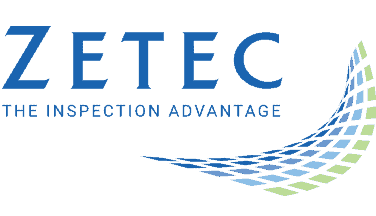Time-of-Flight Diffraction (TOFD) vs Phased Array Methods: What’s the Difference?

Time-of-flight diffraction (TOFD) and phased array ultrasonic testing (PAUT) are two distinct components of a complete nondestructive testing solution. Powered, executed, and analyzed by the same instrument, TOFD and PAUT use different means to search for defects in the same metallic structures. So, it’s not about comparing time-of-flight diffraction vs phased array—it’s about combining them.
As TOFD and PAUT use different methods to test for defects, they each have their own strengths and weaknesses. Used together, the two techniques reinforce each other, increasing the probability of detection for each scan, without significantly increasing the amount of time needed per inspection or the number of inspection personnel. By understanding how each method works, NDT design and maintenance personnel can learn how best to use TOFD and PAUT together.
Phased Array Ultrasonic Testing: Strengths and Weaknesses
Phased array ultrasonic testing is a more advanced form of conventional pulse-echo ultrasonic testing. In both, high-frequency ultrasonic waves are transmitted into a physical object, such as a weld, to produce echoes. The echoes are recorded, analyzed, and reported on by the ultrasonic testing instrument. By doing so, NDT technicians can detect discontinuities in the echo patterns which indicate the presence of cracks, flaws, or corrosion in metallic structures.
Phased array improves on simple, or monolithic, ultrasonic scanning with the use of multiple transducers, capable of scanning at different angles. A computer controller allows technicians to initiate timed pulses, on dynamic angles, simultaneously or in sequence from the instrument’s transducers. These pulses form mutually reinforcing interference patterns, creating a coherent beam of sound which can “sweep” through the object being scanned.
Using older monolithic ultrasonic technology, a technician would need to move their transducer across the entire object to generate a readable image (and would have trouble with curved surfaces, angles, etc.). Using PAUT, this technician can simply move the beam instead. PAUT allows scanning that is not only approximately an order of magnitude faster than conventional monolithic technology, but also more accurate.
While PAUT is safe, fast, and effective, it is not perfect. For instance, depending on their orientation compared to the path of the ultrasonic pulse, cracks and defects may be difficult to fully image using ultrasonic technology. One way to mitigate this risk is by scanning surfaces from multiple origin points on the weld, such as from above and from below. In the real world, this can prove to be impractical however, as it may not be possible to access other sides of a weld.
The other way is to perform an additional scan is using another ultrasonic imaging method—time-of-flight diffraction.
How Time-of-Flight-Diffraction Complements Phased Array Ultrasonic Testing
While also a method of ultrasonic image generation, TOFD relies on a different principle than PAUT. While PAUT uses reflection, TOFD uses diffraction. The transducer produces pulsed ultrasonic waves, which are diffracted to various degrees by irregularities in the scanned material, then collected on the material’s far side by a receiver. By analyzing the differences in a beam’s flight time from the transducer to the receiver, the instrument can detect and image the size and location of defects and flaws.
TOFD can find defects regardless of their orientation, which makes it an ideal complementary technology to PAUT. However, like PAUT, TOFD has certain imaging weaknesses. If only a single scan is made, technicians may encounter a lateral wave dead zone, off-axis errors, timing errors, and resolution errors. In order to gain a complete image of defects, it’s necessary for technicians to use phased array techniques to vary beam width, angle, and point of entry. When TOFD imaging is used with phased array technology, technicians will be certain they have identified any weaknesses in the object being scanned.
In order to achieve rapid, accurate scans of welds, pipes, and other critical metallic components, NDT technicians should use a combination of PAUT and TOFD scanning technologies. Modern, cutting edge ultrasonic test software, housed in portable equipment, is capable of compiling composite images from these dual technologies, to provide the most detailed picture of object interiors possible. Adopting a combined scanning regimen significantly lowers the risk of missing defects and resulting equipment failures. Working together, PAUT and TOFD are more effective than either technique is alone
Zetec is a leading provider of ultrasonic imaging equipment, pioneering phased array ultrasonic and time-of-flight diffraction techniques. To learn more about the best ultrasonic testing equipment for your application, contact us today.





